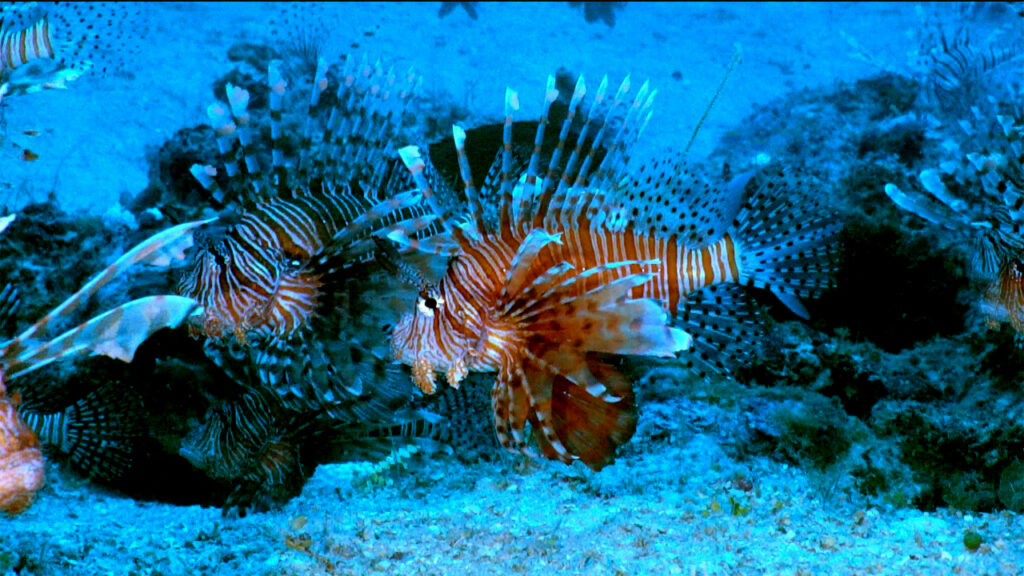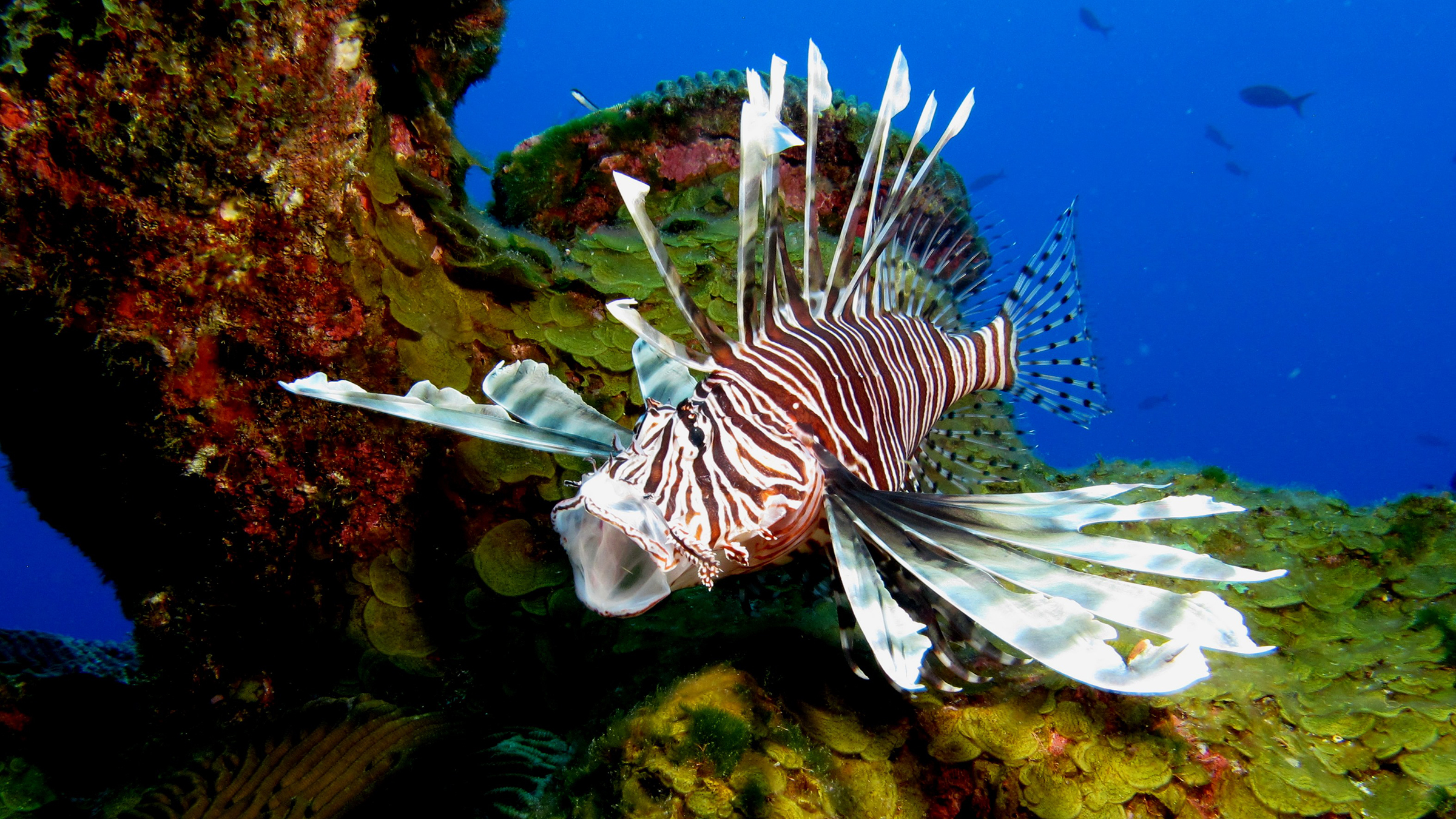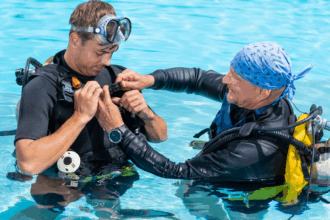The lionfish is one of the most stunning yet destructive invaders of the ocean. Native to the Indo-Pacific, these beautifully striped fish have invaded the Atlantic, Caribbean, and Gulf of Mexico, wreaking havoc on local marine ecosystems. Divers, marine biologists, and ocean conservationists often ask: “What eats lionfish?” Understanding their natural predators is essential to restoring ecological balance and supporting marine life.
In this article, we’ll explore the top predators of lionfish, how humans have stepped in to control their population, and why these interventions are critical for ocean conservation.
Introduction: The Lionfish Invasion
Lionfish are venomous, fast-breeding, and highly adaptable. Since their introduction to the Atlantic in the 1980s, they have:
- Outcompeted native fish for food.
- Reduced biodiversity by preying on juvenile reef species.
- Disrupted the natural food chain.
Because of their spines and venom, few predators naturally target them. However, a few remarkable species have adapted to hunt lionfish successfully, while humans have become key players in controlling their spread.
Top 7 Predators of Lionfish

Table of Contents
Here’s a breakdown of the most effective natural predators of lionfish:
1. Sharks
Some shark species, such as the blacktip reef shark, are known to prey on lionfish. Sharks can crush the venomous spines and safely consume the fish, helping maintain balance on the reef.
Key points:
- Sharks can eat lionfish without being harmed by venom.
- Their presence reduces lionfish dominance in healthy reef ecosystems.
2. Groupers
Large groupers, especially the Nassau grouper, have been observed hunting lionfish. Studies show that groupers in protected areas with abundant prey are more likely to eat lionfish, indirectly controlling their numbers.
Interesting fact:
- In the Bahamas, groupers have been used in lionfish management programs, showing a measurable reduction in lionfish populations.
3. Snappers
Certain snapper species, including schoolmaster and dogtooth snappers, occasionally feed on lionfish. These predators are opportunistic and can help slow down the spread of invasive lionfish.
Key points:
- Snappers are effective in areas with high lionfish density.
- They contribute to the reef’s natural predator-prey balance.
4. Moray Eels
Moray eels are ambush predators that feed on a variety of reef fish, including lionfish. They often hide in crevices and strike unsuspecting lionfish, showcasing their role as a natural control mechanism.
Interesting point:
- Moray eels have adapted to recognize lionfish as prey despite the venomous spines.
5. Frogfish
Frogfish are masters of camouflage and can consume lionfish when opportunities arise. While not a primary predator, they contribute to keeping young lionfish populations in check.
6. Bobbit Worms
These predatory worms are hidden beneath the sand but can grab and consume lionfish that swim too close. They highlight the unexpected ways nature has adapted to invasive species.
Fun fact:
- Bobbit worms can reach up to 10 feet long, making them formidable hunters for unsuspecting lionfish.
7. Humans
Humans are now the most effective “predators” controlling lionfish populations. Divers, fishermen, and organized lionfish hunting programs play a significant role in reducing numbers.
Key initiatives:
- Lionfish derbies and competitions encourage safe removal.
- Restaurants and markets promote eating lionfish as a sustainable seafood choice.
- Targeted hunting prevents overpopulation in sensitive reef areas.
Learn more about lionfish hunting rewards here.
Challenges in Predator Adaptation
Despite these predators, lionfish populations remain high because:
- Many native predators avoid venomous spines.
- Young lionfish grow rapidly and reproduce frequently.
- Habitat destruction limits the effectiveness of natural predators.
These challenges make human intervention critical in managing invasive populations.
Human Intervention: A Necessary Measure
Humans have stepped in where nature struggles. Through organized hunting and educational programs, divers and communities have:
- Controlled lionfish numbers effectively.
- Protected native species from overpredation.
- Promoted sustainable seafood practices by encouraging lionfish consumption.
Example:
- In Florida and the Caribbean, lionfish derbies remove thousands of fish each year, reducing ecological pressure on reefs.
Conclusion: Restoring Marine Balance
Understanding what eats lionfish is more than a curiosity—it’s essential for ocean conservation. Sharks, groupers, moray eels, and even humans play crucial roles in controlling this invasive species. By supporting these predators and participating in responsible lionfish management, divers, conservationists, and ocean enthusiasts can help restore reef ecosystems and protect biodiversity.
Call to action:
- Participate in local lionfish hunts.
- Support conservation programs.
- Educate others about the ecological impact of lionfish.
For more thrilling ocean adventures and extreme sports guides, visit Skydive Guides to explore top destinations and safety tips.
FAQs About Lionfish
Q1: Are lionfish good for anything?
Yes! Lionfish are edible and considered a delicacy in some regions. Eating them helps control invasive populations.
Q2: Can a barracuda eat a lionfish?
Barracudas rarely eat lionfish due to their venomous spines, although large individuals may occasionally attempt it.
Q3: What fish kills lionfish?
Natural predators include sharks, groupers, snappers, and moray eels.
Q4: What eats lionfish in Florida?
Sharks, groupers, and human hunters are the primary controllers in Florida waters.
Q5: What do lionfish eat?
Lionfish feed on small fish, shrimp, and other invertebrates, which contributes to their invasive impact.
Q6: Can you eat lionfish?
Yes! Lionfish are safe to eat once properly cleaned and filleted, and consuming them helps conservation efforts.




